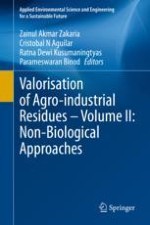2020 | OriginalPaper | Buchkapitel
4. Bioprocessing with Cashew Apple and Its By-Products
verfasst von : Asha P. Antony, Swapna Kunhiraman, Sabu Abdulhameed
Erschienen in: Valorisation of Agro-industrial Residues – Volume II: Non-Biological Approaches
Aktivieren Sie unsere intelligente Suche, um passende Fachinhalte oder Patente zu finden.
Wählen Sie Textabschnitte aus um mit Künstlicher Intelligenz passenden Patente zu finden. powered by
Markieren Sie Textabschnitte, um KI-gestützt weitere passende Inhalte zu finden. powered by
